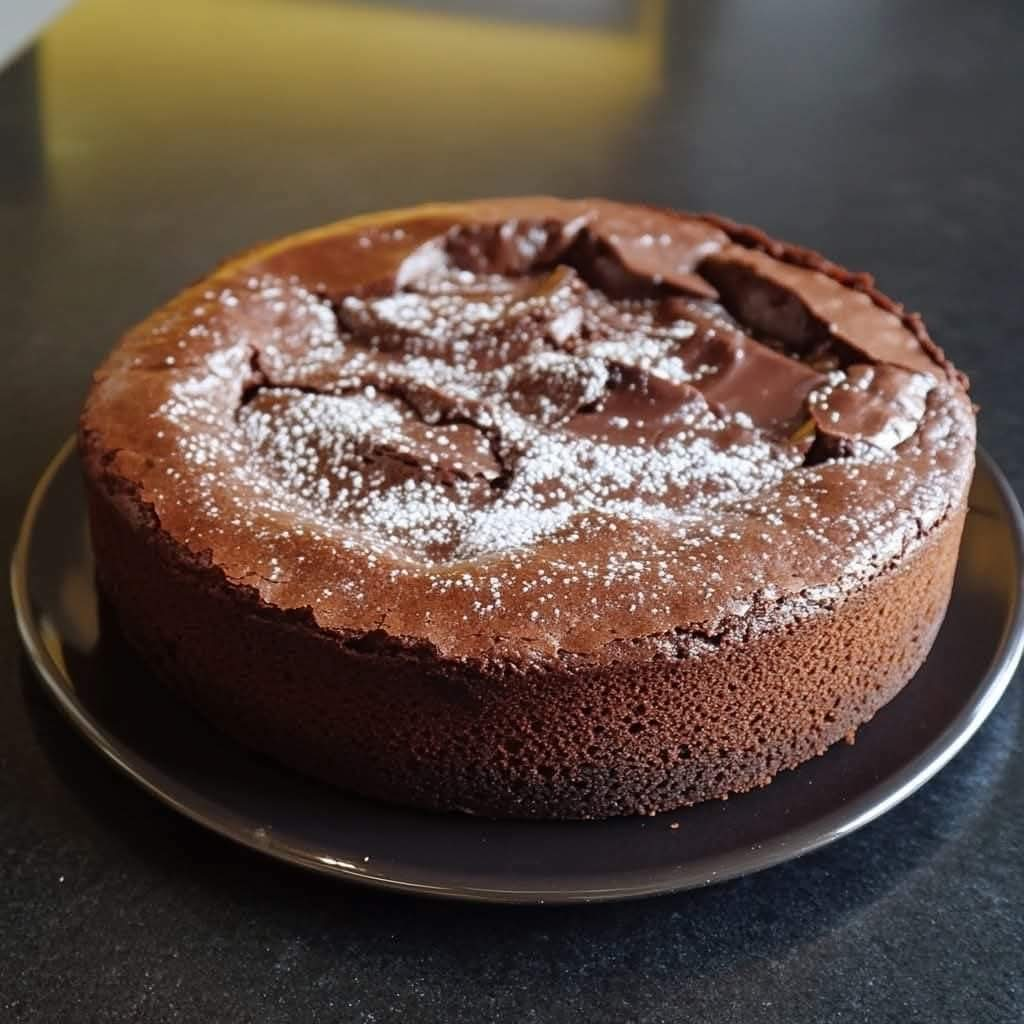Le gâteau au chocolat fondant rapide est le dessert parfait pour les amateurs de chocolat pressés par le temps.
Avec une préparation en seulement 10 minutes et une cuisson rapide, il offre une texture moelleuse et un cœur légèrement fondant qui ravit les papilles.
Que ce soit pour une occasion spéciale ou une envie gourmande de dernière minute, ce gâteau est un incontournable qui allie simplicité et saveur.
Servez-le nature, saupoudré de sucre glace, ou accompagné d’une boule de glace pour un plaisir encore plus gourmand.
Gâteau au chocolat fondant rapide
Ingrédients :
200 g de chocolat noir
100 g de beurre
150 g de sucre
100 g de farine
1 pincée de sel
Sucre glace pour la décoration (facultatif)
3 œufs
1 cuillère à café de vanille liquide
Instructions :
Préchauffez le four à 180 °C (350 °F).
Faites fondre le chocolat noir et le beurre au bain-marie ou au micro-ondes.
Mélangez bien jusqu’à obtenir une texture lisse.
Dans un bol, battez les œufs avec le sucre et la vanille jusqu’à ce que le mélange blanchisse et devienne mousseux.
Incorporez le chocolat fondu au mélange d’œufs, puis ajoutez la farine et le sel.
Mélangez jusqu’à obtenir une pâte homogène.
Versez la préparation dans un moule beurré et fariné.
Enfournez pendant 15 à 20 minutes. Le centre doit rester fondant.
Laissez refroidir quelques minutes avant de démouler. Saupoudrez de sucre glace avant de servir.
Temps de préparation : 10 minutes | Temps de
cuisson : 20 minutes | Temps total : 30 minutes
Kcal : 320 kcal | Portions : 6 portions
Pour varier les plaisirs, ajoutez des éclats de noisettes, des noix ou des pépites de chocolat à la pâte pour une texture croquante.
Si vous préférez un goût plus intense, optez pour du chocolat noir à 70 % de cacao.
Pour une version encore plus gourmande, servez le gâteau avec une boule de glace vanille ou un filet de caramel au beurre salé.
Enfin, veillez à ne pas trop cuire le gâteau pour préserver son cœur fondant : surveillez bien la cuisson en fonction de votre four.
Pour conserver votre gâteau au chocolat fondant, placez-le dans une boîte hermétique à température ambiante si vous prévoyez de le déguster dans les 1 à 2 jours.
Pour une conservation plus longue, vous pouvez le mettre au réfrigérateur, où il restera frais jusqu’à 4 jours.
Avant de le servir, laissez-le revenir à température ambiante ou réchauffez légèrement une part au micro-ondes pour retrouver sa texture fondante.
Si vous souhaitez le congeler, emballez-le soigneusement dans du film alimentaire et placez-le dans un sac congélation.
Décongelez-le au réfrigérateur quelques heures avant dégustation.
Un gâteau au chocolat fondant contient environ 320 kcal par portion, ce qui en fait une option gourmande mais à savourer avec modération.
Chaque portion offre un apport riche en glucides grâce au sucre et à la farine, ainsi qu’en matières grasses provenant du beurre et du chocolat.
Bien qu’il ne soit pas particulièrement riche en fibres ou en protéines, ce dessert procure une dose de plaisir chocolaté et d’énergie rapide.
Pour réduire les calories, vous pouvez utiliser un édulcorant ou diminuer légèrement la quantité de sucre et de beurre.
